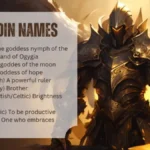anime femboys Introduction
anime femboys, a Japanese animation style, has gained popularity worldwide for its unique art style, engaging storylines, and memorable characters. Among the various character archetypes, one particular group has been gaining attention in recent years – anime fanboys. These androgynous characters have been a part of anime culture for decades, but their popularity has surged recently, especially among younger audiences. In this article, we will explore the world of anime fanboys’ history, characteristics, and the reasons behind their growing popularity.
History of Anime Femboys
Anime femboys have been present in the anime industry since its early days. One of the pioneers of this archetype is the character Rose of Versailles from the 1979 anime series of the same name. This character’s androgynous appearance and mannerisms set the stage for future femboy characters. Another classic example is the character Hoshi from the 1985 anime series Saint Seiya. Hoshi’s feminine appearance and fighting skills made him a fan favorite among audiences.
In the 1990s and early 2000s, anime femboys gained more recognition, with characters like Sailor Moon’s Sailor Starlights and Fruits Basket’s Akito Sohma. These characters were not only androgynous but also played significant roles in their respective stories, showcasing their complexity and depth. The 2010s saw a surge in the popularity of anime fanboys, with characters like Kill la Kill’s Nudist Beach and JoJo’s Bizarre Adventure’s Giorno Giovanna becoming fan favorites.
Characteristics of Anime Femboys
Anime femboys are known for their androgynous appearance, often blurring the lines between traditional gender norms. They may have feminine features, such as long hair, slender bodies, and delicate facial features, but they also possess masculine traits like broad shoulders, muscular builds, and deep voices. Their fashion sense often reflects their androgynous nature, mixing masculine and feminine clothing styles.
Another characteristic of anime fanboys is their confidence and self-assurance. They are often portrayed as strong and independent individuals who are unapologetic about their gender expression. This confidence makes them appealing to audiences, especially younger viewers who may be struggling with their own gender identity.
Popularity of Anime Femboys
So, why are anime femboys gaining popularity? One reason is the growing acceptance of gender fluidity and non-binary identities. Anime femboys offer a representation of gender expression that is not often seen in mainstream media, making them relatable and appealing to audiences who identify as non-binary or genderqueer.
Another reason for their popularity is the rise of social media platforms like Tumblr, Twitter, and Instagram. These platforms have created a space for fans to share their love for anime fanboys, creating fan art, cosplay, and fan fiction. This online community has helped spread the popularity of anime fanboys, introducing them to a broader audience.
Impact of Anime Femboys on Representation
The growing popularity of anime femboys significantly impacts representation in media. They offer a positive representation of gender fluidity, showing that gender expression is not limited to traditional binary norms. This representation is crucial, especially for younger audiences who may be struggling with their own gender identity.
Anime femboys also challenge traditional gender roles and stereotypes, showcasing that men can be feminine and strong at the same time. This challenges the toxic masculinity that is often perpetuated in media, offering a more inclusive and accepting representation of gender.
The Evolution of Anime Femboys
Anime femboys have undergone significant changes over the years, reflecting the evolving attitudes towards gender and sexuality. In the past, anime femboys were often portrayed as comedic relief or as a plot twist, but modern anime has moved beyond these stereotypes.
Modern anime femboys are complex characters with rich backstories and motivations. They are no longer relegated to minor roles. Still, they are the main characters, driving the plot forward—this shift in representation results from the growing acceptance of gender fluidity and non-binary identities.
Conclusion
Anime femboys have come a long way since their early days in the anime industry. From their androgynous appearance to their confident and self-assured personalities, they offer a unique and fascinating representation of gender expression. Their growing popularity is a testament to the changing times, with audiences seeking more inclusive and diverse representation in media. As the anime industry continues to evolve, it will be exciting to see how anime fanboys continue to shape the landscape of gender representation in media.


